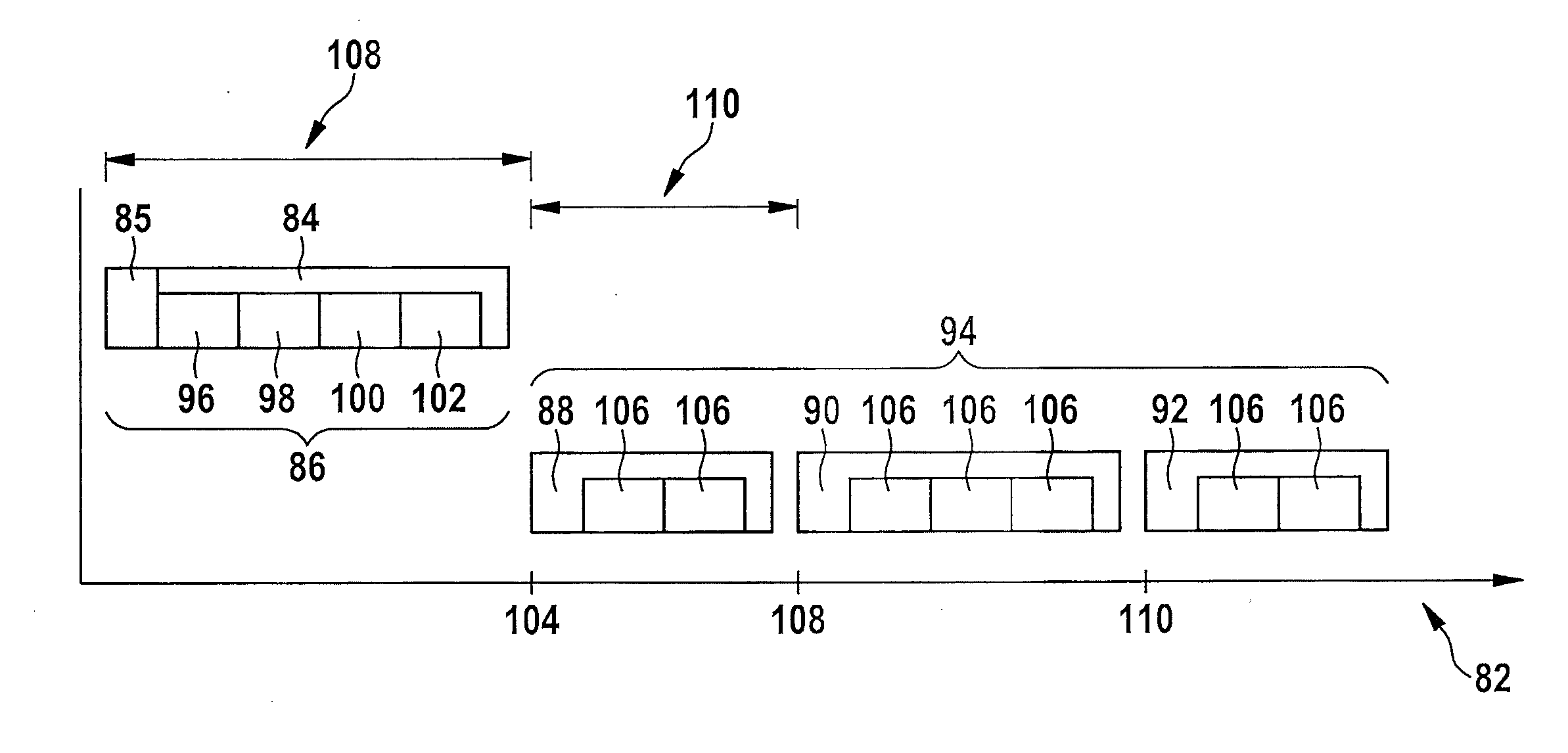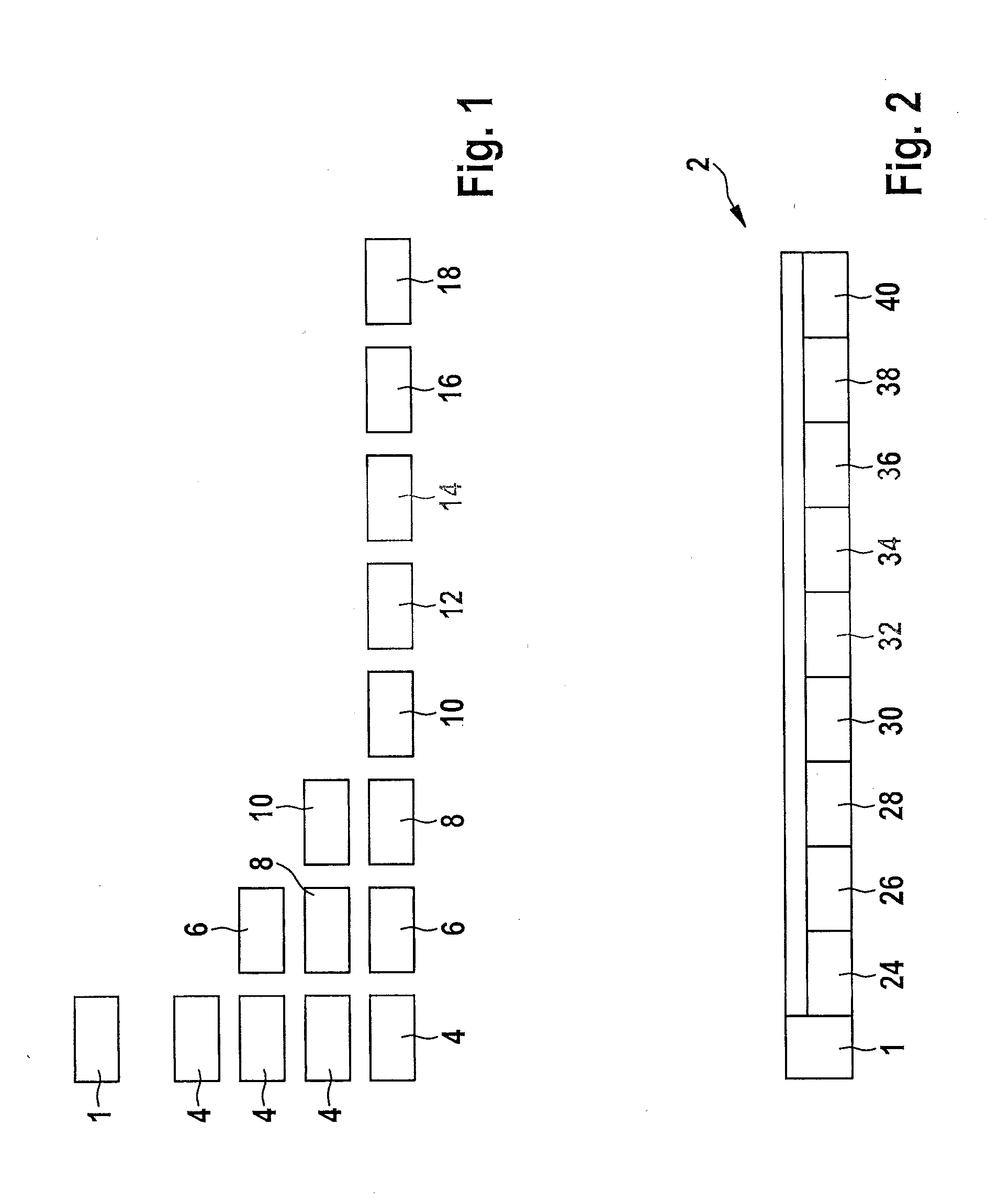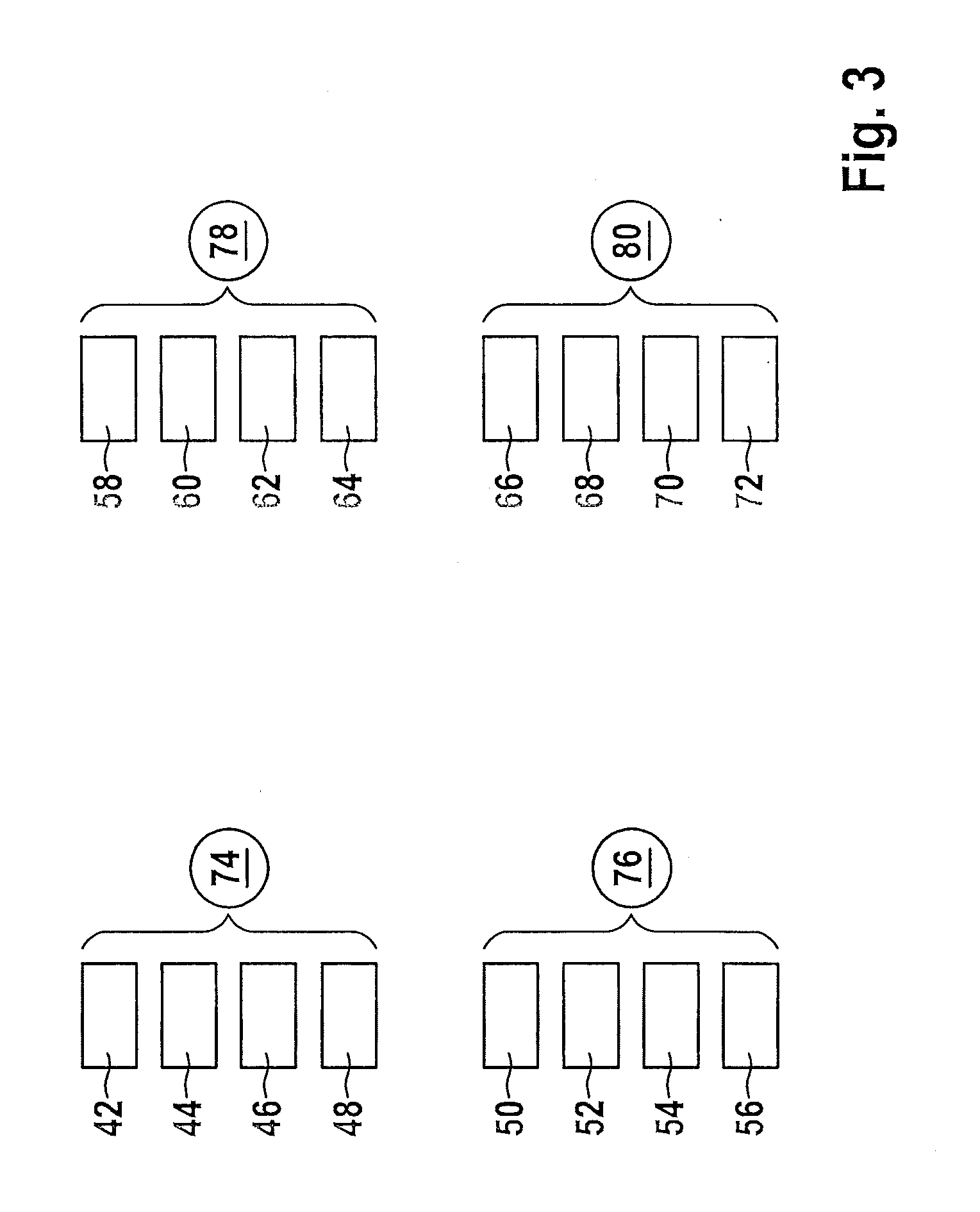Method for operating a bus system
a bus system and bus system technology, applied in the field of bus system operation, can solve the problems of inability to fully utilize the bus system, interrupt the transmission process, and create considerable delays caused by repeated and individual interrogation of slaves, so as to improve the transmission rate of payload data, optimize idle time and blank bytes on the bus system, and improve the effect of latency
- Summary
- Abstract
- Description
- Claims
- Application Information
AI Technical Summary
Benefits of technology
Problems solved by technology
Method used
Image
Examples
Embodiment Construction
[0036]In FIG. 1, a header 1 of an interrogation frame 2 represented by the subsequent FIG. 2 is shown in a first line; the interrogation frame being sent by a master of a bus system to a total of k slaves of the bus system, where k=8, in order to carry out an interrogation. During the interrogation, only the header 1 shown here in FIG. 1 is transmitted.
[0037]If data are to be transmitted by only a first slave during a designated data transmission cycle, then, according to a first schedule, a first time slot 4 is provided by the master for the only one, e.g., first slave, as the second line from FIG. 1 shows.
[0038]In the third line, a second time slot 6 is also shown next to first time slot 4; the second time slot being in a schedule for a data transmission cycle, in which data are to be sent by two slaves. In this connection, second time slot 6 is assigned to a second slave of the bus system.
[0039]In this context, in a schedule of a data transmission cycle illustrated in the fourth ...
PUM
 Login to View More
Login to View More Abstract
Description
Claims
Application Information
 Login to View More
Login to View More - R&D
- Intellectual Property
- Life Sciences
- Materials
- Tech Scout
- Unparalleled Data Quality
- Higher Quality Content
- 60% Fewer Hallucinations
Browse by: Latest US Patents, China's latest patents, Technical Efficacy Thesaurus, Application Domain, Technology Topic, Popular Technical Reports.
© 2025 PatSnap. All rights reserved.Legal|Privacy policy|Modern Slavery Act Transparency Statement|Sitemap|About US| Contact US: help@patsnap.com



